Milos
the island of colors
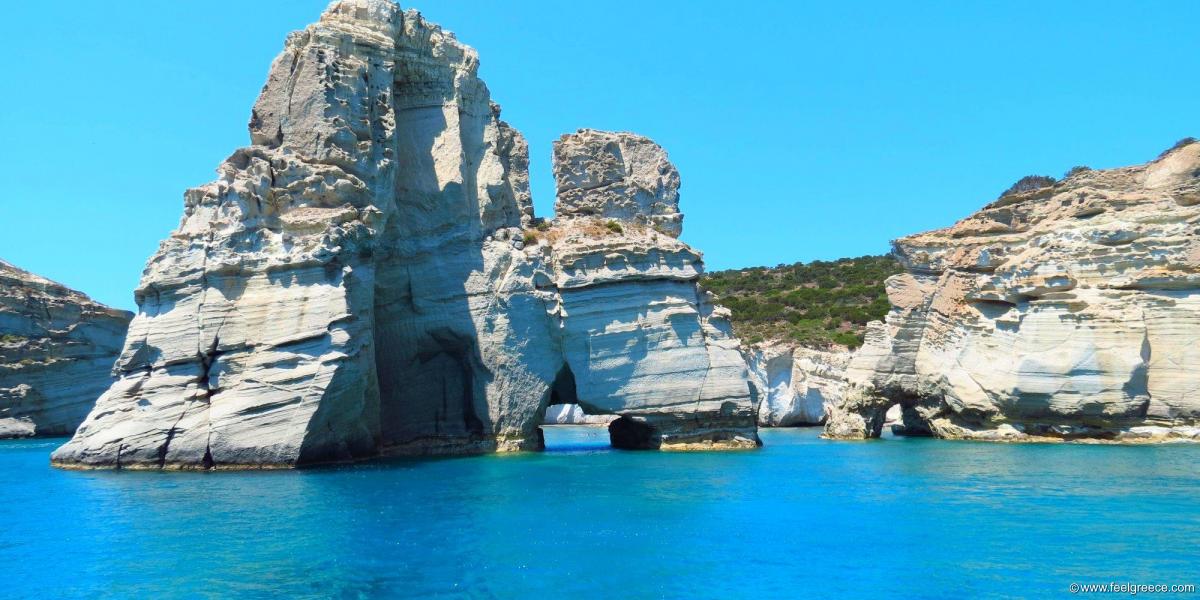
Milos
Milos is a volcanic island which belongs to the west Cyclades. Like the rest islands of the group, it has white and blue houses, churches and beaches but this is all in common. Milos is distinguished for the variety of colors you can see both at the beaches and the scenic fishing villages with the quintessential boat garages, called syrmata.
The rocks, the soil and even the pebbles on some of the beaches are colored in white, yellow, red and purple and for this is why Milos is nicknamed ”the island of colors”. Due to its volcanic past, the coastline is very interesting and beautiful, with strange rocks, many sea caves and out-of-this-world beaches like Sarakiniko, Kleftiko and Papafragas.
Quick Guides
General information about Milos
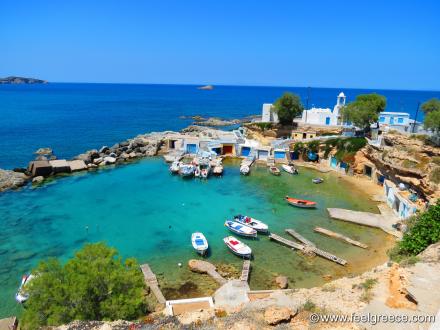
The island is in the shape of a horseshoe where the eastern half is ”civilized”, while the western half is part of Natura 2000 and has no settlements, except for the small fishing harbor of Embourio. All villages and beaches you have seen on photos are located in the east, along with the capital Plaka - a beautiful old settlement built on a hill above the sea which somehow reminds of Santorini caldera. From the top of Plaka, at an altitude of about 200 meters, you can enjoy magnificent sunsets. Other popular villages of the island are Adamas and Pollonia.
The roads in the west half of the island are unpaved and excluding Embourios and a few chapels, there is nothing else. Access to the beaches is not very easy, though some of them are totally worth to visit, so boat trips are recommended if you want to see this part of Milos. Kleftiko, the symbol of the island, is also located on the southwest coast.
Where to stay in Milos?

Adamas and Pollonia are lively seaside villages with small beaches and plenty of hotels and places to eat. Adamas is the main port where all ferries arrive and depart, and it has the best location if you plan to explore the entire island. Pollonia is known for its fresh fish tavernas and it is also the port which connects Milos with Kimolos, a small island nearby.
Plaka and the villages around it - Trypiti, Triovasalos and Pera Triovasalos - are another option for accommodation, and some hotels here have amazing views because of the elevated position.
And finally, some of the attractive syrmata houses of Klima, Mandrakia and Firopotamos are now luxury seafront villas for those who want something different.
Which are the best beaches of Milos?
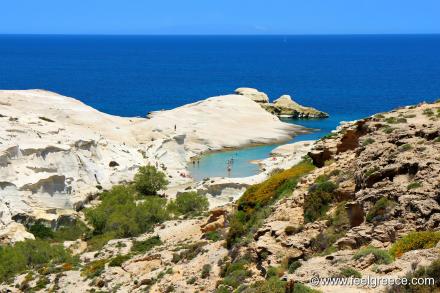
Be prepared to see the weirdest beaches of Greece exactly in Milos! The unique landscape of Sarakiniko (aka Moon Beach) has turned it into the most known and visited place of the island, and the second most popular destination is Kleftiko, a group of white rock formations with sea tunnels where you can swim in bright blue water.
If you are looking for the typical sandy beaches, check out Achivadolimni, Firiplaka, Provatas and Plathiena. And since we are talking about the island of colors, do not miss to visit Paleochori, Paliorema and Kastanas - the most colorful beaches of Milos.
What to do in Milos?
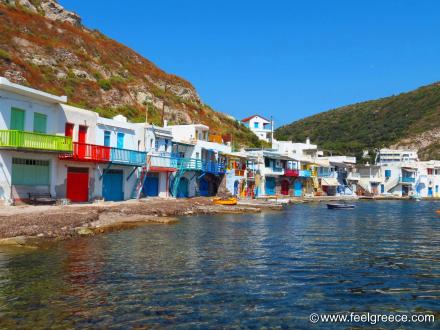
When in Milos, do not miss to visit the following places of interest:
- Klima, the scenic fishing village with syrmata painted in brights colors
- Sarakiniko beach with its moon landscape and the pirates` tunnels
- The capital Plaka with its Kastro - ruins of a castle on the top, with stunning sunset view
- The fishing villages of Firopotamos and Mandrakia
- The volcanic beaches of Firiplaka, Paleochori and Kastanas
- Kleftiko, accessible via daily boat trips
- Thiorichia, the abandoned mine at Paliorema beach
- The Catacombs of Milos - early Christian tombs
- The underground church of Agios Konstantinos, carved in a rock and often flooded by the sea
- Sykia Cave (accessible only by sea and usually part of the trips to Kleftiko)
- Sarakiniko shipwreck - you can still see the ruins of a ship close to the shore
- The hot springs in the area of Adamas, gushing out from the sea
- The mine museum in Adamas
Interesting facts about Milos
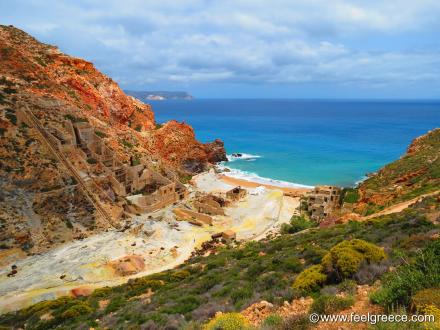
The eruptions of Milos volcano had stopped approximately 90 000 years ago but it is still considered dormant. An evidence of the ongoing volcanic activity is the Firiplaka crater with its fumaroles above Agia Kyriaki, as well as the hot springs which can be felt in the sea around some of the beaches.
The island is very rich in minerals, especially obsidian, perlite and bentonite. Its main business is trade with these minerals and for this reason you will see many quarries, especially in the northwest and east part of MIlos. Do not miss the trip to the abandoned Thiorichia mines.
No matter its volcanic origin, Milos is not barren and has vegetation - olives, capers, grapes, figs and oranges are the most widespread local products.
The picturesque syrmata are two-storey fishermen`s houses in which the ground floor is used as a boat garage and the upper floor as a resting place. Today many of these houses are renovated and function as boutique holiday homes.
The famous statue of Aphrodite, also known as Venus de Milo and currently exhibited in the Louvre, was originally found on the island.
How to get to Milos
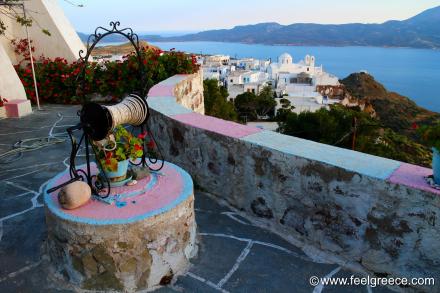
Milos has a small airport and it can be reached by plane. There are also regular ferry connections with the port of Piraeus and the rest islands of the Cyclades group, especially with Sifnos and Serifos.